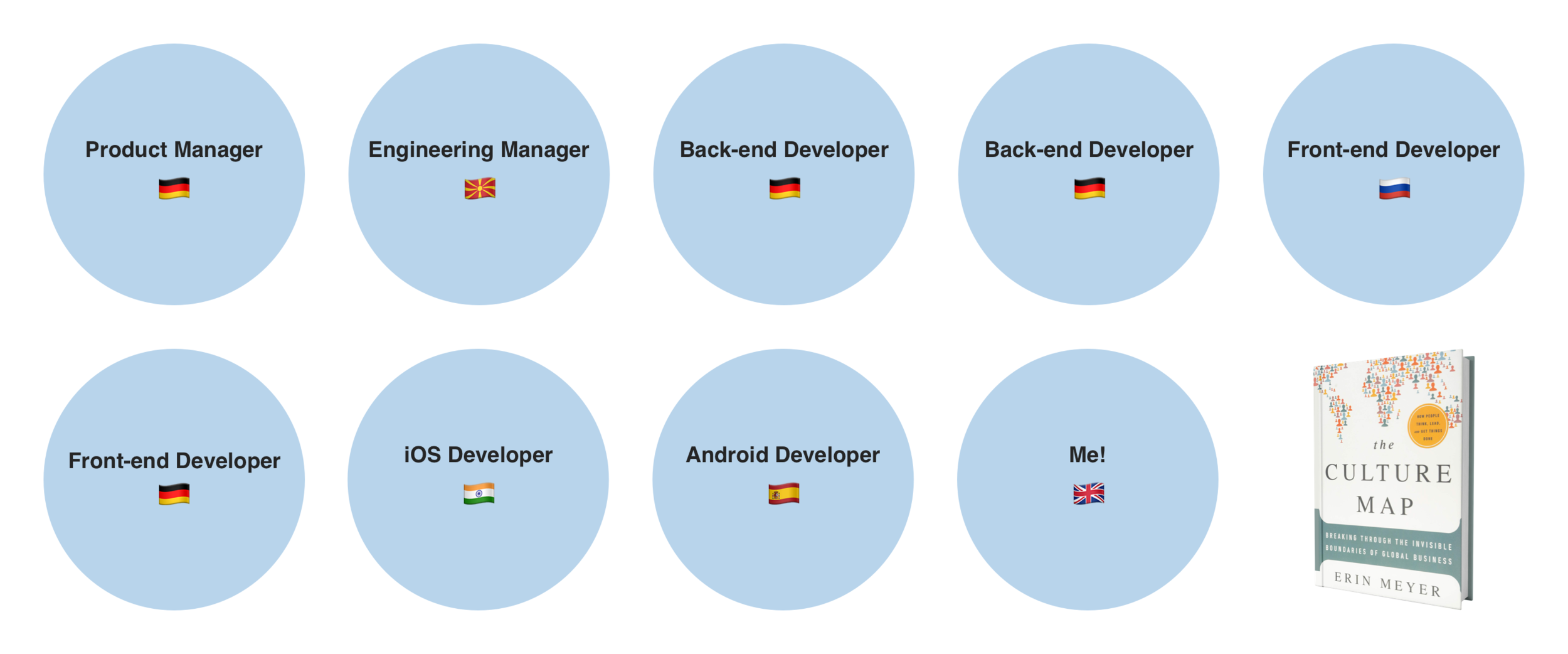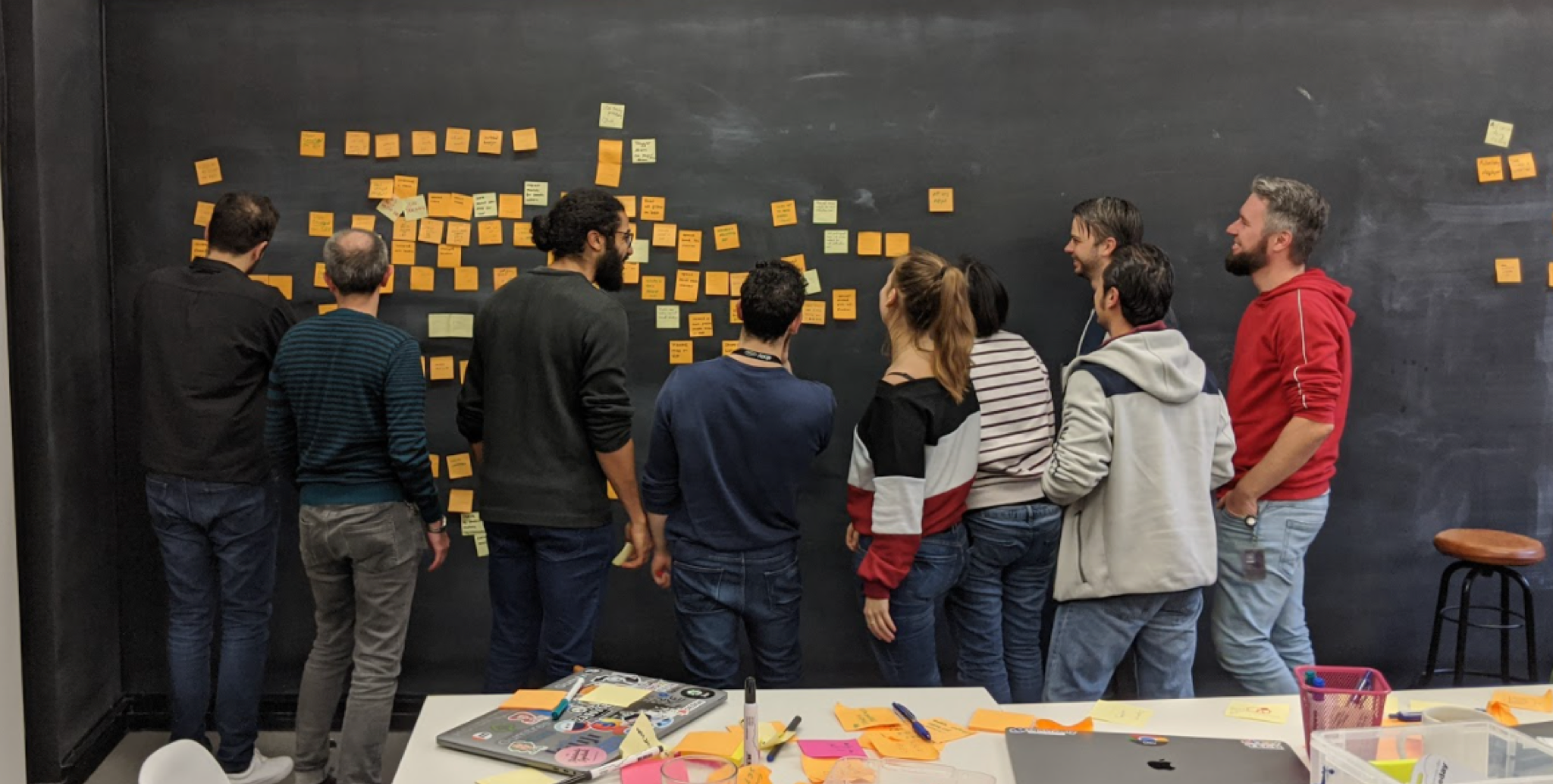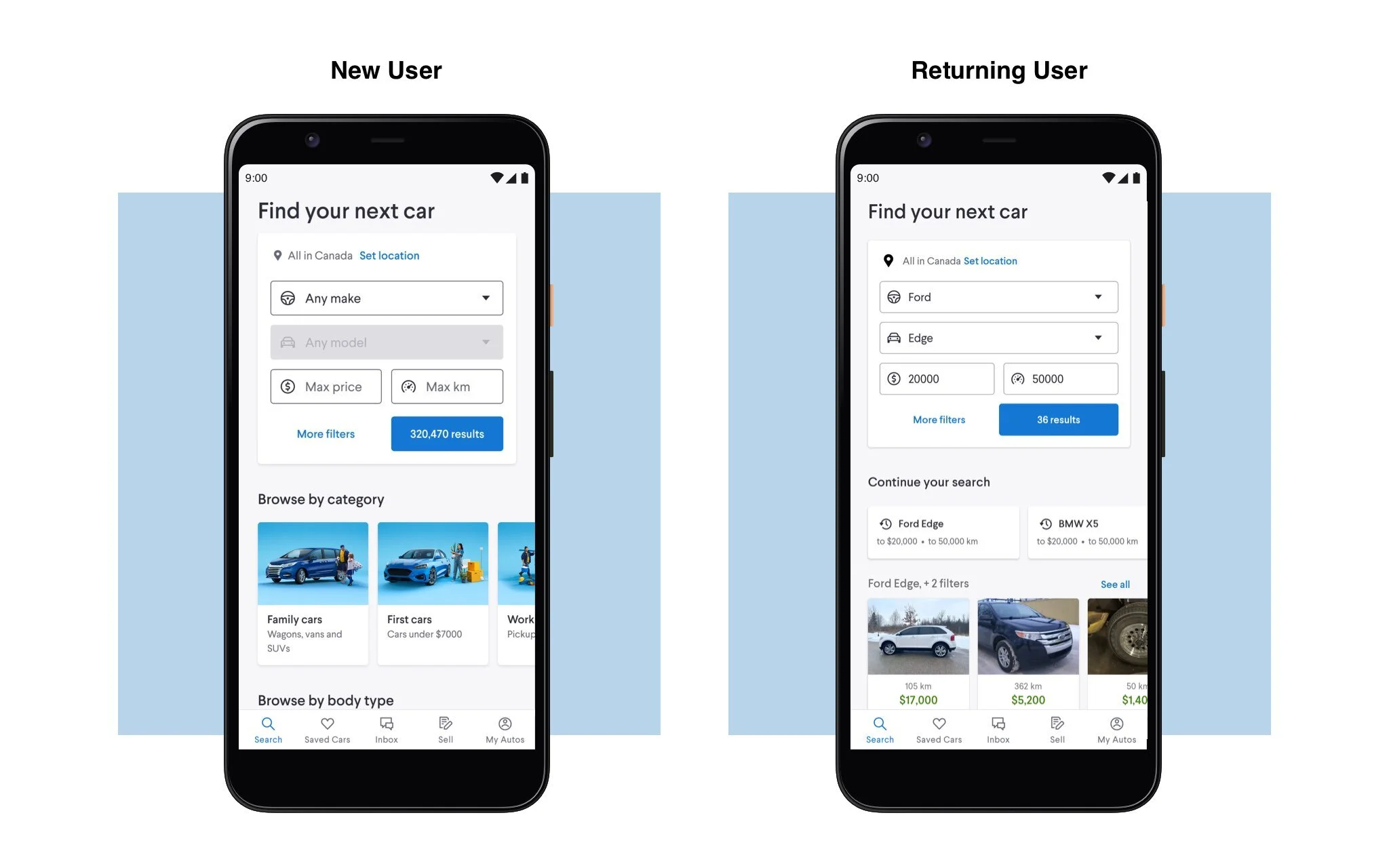eBay - Launching and scaling a global marketplace
eBay
designing, Launching and scaling a global product and service
The challenge
Design and launch a world beating vehicles marketplace where users can buy and sell with ease. Then scale it to various countries around the world. Starting from nothing.
The outcome
A service that is continuously helping users buy and sell vehicles. As well as providing assistance into which vehicle is best for them, and how to navigate the complex buying process.
Successful launches in Canada and Australia. Now to scale the product and service into other ebay countries around the world.
4.7 rating in the App Stores (30,000+ ratings)
My role
Working in an agile multidisciplinary team I was responsible for discovering, defining, designing and shipping solutions to solve user and business problems.
Collaborating closely with software engineers, product mangers, data scientists and industry experts.
My role was diverse, giving me an excellent opportunity to test and prove myself across a number of areas, including:
User research
Stakeholder management, persuasion and collaboration
Service Design
Product Design
Innovation
Design Sprints
Product Strategy
Workshopping
User testing
To name a few.
I balanced tactical low level objectives, shipping solutions to problems in 2 week sprints. Alongside working on high level strategic pieces of work, envisioning future services.
My time working at eBay was in Berlin, my first time living and working abroad. As such there were new situations to adapt to, on top of a fast paced working environment. A wonderful experience.

No team, no product, no office
I joined in June 2018, walking into a half built office, a team still being assembled and little to no product or service. Everything was slowly but surely getting off the ground.
This was a new venture within eBay. We were viewed as a start-up within the organisation, tasked with a difficult objective and an aggressive timeline.
“When I joined there was no team and no product. Even the office was under construction!”
We were up against it, and had a lot of work ahead of us. But we had a clear vision that we were working towards: ’To make the vehicle buying process as simple as possible for everyone.’
The team
We started with four teams. I was placed into one as the sole designer responsible for delivering consistent positive output and outcomes for user and business.
I was thrown into the team with eight others, all strangers, with no prior experience working together. An interesting social experiment as much as a work environment.

Workshopping with the team on mission, values and vision
A mix of nationalities and backgrounds, which for the entirety of my time with eBay proved to be a crucial part of the work. The way different cultures conduct themselves in the work place is fascinating, as outlined in Erin Meyer’s The Culture Map.
Communication styles, promises, optimism/pessimism, and a range of other cultural traits flared up during our time working with one another, and with our Canadian and Australian stakeholders.

A mix of nationalities and backgrounds. Fascinating to work in and read about in the Culture Map
Team focus
The team I joined was given the task of supporting the undecided and inexperienced user. An important and under served user base that we were keen to help.
The focus was on supporting those who:
Were undecided on which make and model to purchase
Were unfamiliar with the car buying process
Were apprehensive about purchasing a new vehicle
The vehicle buying process is complex, even more so if you haven’t done it before. The public perceive the second hand car market to be dodgy, and fraught with salesmen looking to move on their cars.
Add in to that users who don’t know what car they want, that it will most likely be an expensive purchase, and it’s easy to understand why people are nervous about buying a new vehicle.
“The team I joined was given the task of supporting the undecided and inexperienced user.”

A selection of quotes from user research
As a team we were tasked with adding more to the value proposition of the business. Not only being a marketplace, but a trusted destination users can rely on throughout.
Our vision within the team was to be the trusted partner of the user throughout their vehicle buying journey. From discovering to searching to purchasing.
“Our vision within the team was to be the trusted partner of the user throughout their vehicle buying journey.”
Build
From the summer of 2018 to early 2019 we worked at pace. Discovering, prototyping, testing, and building out the product and service.
It was a relentless time. Working hard to ensure the product and service could compete with the market leader in our first country we were launching in - Canada.
We started with a solid base, user research completed by the founding members of our organisation. It explored customer attitudes, needs and the unsolved problems users were encountering.

Building on user research and market research completed by the founding members
Sprints
We worked in 2 week sprints, in a strict agile environment overseen by an Agile Coach. Within our team we worked in our own hybrid mix of scrum and kanban. Daily stand-ups, a visible kanban board and other agile ceremonies all with the aim of turning us into a high performing team.
Each 2 week sprint finished with a demonstration of what we had built, learnt and progressed in. We also reviewed our team performance at the end of every sprint with retrospectives.
Given we were a brand new team, and really just a bunch of strangers, the retrospectives were important. They were team bonding as much as uncovering where we could make improvements. Over time it led to the team becoming more efficient and high performing.
“Given we were a brand new team, the retrospectives were important. They were team bonding as much as uncovering where we could make improvements.”

Retros, team experiments, demos and many other agile ceremonies were common
I typically worked 2 - 4 weeks ahead of the development team. This ensured there was always new topics for them to plan, prepare and build.
During this time I experienced new topics and learnt a lot about product strategy and product management. How to scope planned activities to ensure we delivered user value, while weighing that up against competing topics.
We had to be careful with prioritisation. Only prioritising the best ideas, and key functionality, as we were working towards a fixed launch date.
“During this period I worked across product strategy, product management and lean development.”
User research
At this stage of the project we were building from scratch.
There was little to no user data to review, or the ability to A/B test solutions. We hadn’t yet launched and so user research came in the form of in person qualitative studies. Alongside the occasional quantitative study when looking to validate or explore a topic on a larger scale.
“Each sprint we would have at least one user research day in which the entire company was invited.”

User research sessions. Developers, Sales, Marketing and more came to observe and give input
During the two week sprints we would have at least one user research day in which the entire company was invited to come and observe users getting hands on with our product.
Typically through prototypes a range of ideas and potential solutions were explored with car buyers in Canada.
We would observe and note take from Germany, whilst our user research colleague conducted the research with participants in Canada. The set up worked well, and during most occasions I would iterate on the prototypes between sessions using the learnings gathered from previous participants.
The user research sessions proved valuable within the organisation. Developers, Sales, Marketing etc came and observed users interacting with various solutions.
They were intrigued by it, it gave them the opportunity to see how their work was impacting others, and allowed them to really understand who it was that we were helping.
“Regular user research sessions, open to all, helped spread a user centric culture throughout the organisation.”
Over time this helped spread a user centric culture throughout the organisation, one of which we within the Experience Team were proud of.
The sessions were typically observing users test a prototype, built software or even a proof of concept - a more high fidelity prototype built with code rather than in InVision/Figma.
Alongside the user testing of solutions, the remainder of the session was used to conduct discovery research for future topics that I and the rest of the team would be tackling.
This research typically took the form of an in-depth interview, some of which I conducted remotely. But they also involved card sorts, prioritisation exercises and walkthroughs of competitor products and services.

How time was typically split during user research sessions
Alpha and Beta
Before a public launch the product went through an Alpha and Beta phase. Designed to uncover experience flaws, product gaps and technical issues.
Alpha Launch
The Alpha was internal only. Meaning a select, yet large group of ebay employees were given access to the product. Done so in a way that ensured an equal amount of people were testing across all platforms; web (mobile and desktop), iOS and Android.
Ranging from senior stakeholders, to product specialists, to those simply interested. Try it, test it, give feedback. That is all we asked of our testers from the Alpha.
The research was a mix of set tasks and free roaming. Testers were asked to complete common journeys, documenting their findings as they moved through the flows. Through screenshots, voice notes and scribbles we collected and categorised the feedback.
“Through screenshots, voice notes and scribbles we collected and categorised the feedback from testers.”

User testing of ideas
The free roam was simply that. Users could roam around the product and service as they so wish. Uncovering performance bugs, experience bugs and parts that didn’t live up to their expectation.
There was a Google Form readily available to collect the feedback from within the product. To close off the study, we ran closing interviews to get into the detail of what the users had experienced. As well as to hear first hand their struggles and recommendations.
The feedback was synthesised and shared throughout the organisation. The key findings, and what we were going to do about them, were communicated at the company All Hands.
“The feedback was synthesised and shared throughout the organisation. Key findings and how they were going to be addressed were communicated at the company All Hands.”
Beta Launch
From the Alpha study we had collected bugs, experience issues and feature requests across various levels of the product.
Time was against us as we were working to a set date in which the product would be launched publicly. We had to prioritise the topics that we, the Product and Experience Team, believed would have the biggest benefits.
In the time between the Alpha and Beta we came up with ideas, tested them qualitatively to give us some confidence they would have impact in market, and then built them.
The Beta study was also a fixed date. This one was more movable than the public launch, however we were against pushing it back. The time constraint encouraged us to prioritise and work on only the most important issues.

Impact Vs. Effort prioritisation workshop with the development team
“The fixed date of Beta encouraged us to prioritise and work on only the most important issues. A positive time constraint.”
Where the Alpha study was internal, the Beta study was external. 50 participants living in Canada who were actively in the process, or about to start the process of looking for a new vehicle, were recruited to take part.
The Beta ran in a similar fashion to the Alpha, fixed tasks were given to users to complete at least every other day. While also being able to free roam around the product, and use it to actually discover, search and buy a new vehicle.
The Beta ran for 4 weeks, so during that time we were still iterating and launching new parts of the product that our Beta testers could get hands on with.
Once again the feedback from the study was collected, themed and prioritised. Feedback in which we could make quick fixes to the product was implemented immediately.
“The Beta study ran for 4 weeks. During which we were still iterating and launching new functionality that our testers got hands on with.”
The outcome from the Beta was another huge data source full of user issues, recommendations and areas where the service didn’t quite live up to expectations.
At this point we were 6 weeks out from the public launch. This gave us 3 sprints to work on the most pressing matters that needed to be solved.
Public Launch
The product is a global product and will be launched in different countries around the world. For our first market, Canada, the decision was taken to go to market under the name Kijiji Autos.
Kijiji was, and still is, a well established and household name in Canada. Famous for being a customer to customer marketplace. Kijiji Autos was launching as a specialised, vehicles only marketplace.

Introducing Kijiji Autos

Start and resume with ease
New users
With the homepage we aimed to serve both those who new what car they wanted, and those that didn’t, equally well.
Returning users
A personalised experience for users coming back to Kijiji Autos to pick up where they left off.

Home is designed to support both new and returning users effectively
Discover cars by need
A carefully curated selection of cars suitable for different life stages, people and situations. A refreshingly new way for users to discover cars that meet their needs.

Users can search and discover cars that meet their needs
Discover cars by shape and size
For users that know what shape and size car they want, but not much else, they can browse by body type. Discovering all cars that fit the type of car they need, along with a hand picked list of the top cars within each body type category.

Users who know what size car they need can discover which is best for them all in one place, and review the top picks
User friendly vehicle information
A one stop shop overview of a car. Users can learn more about a car they’re interested in, discover a new car that meets their requirements, and compare cars they’re considering against one another. The content has been crafted to ensure non-car savvy buyers understand it.

Users can learn more about a car they like, and discover cars that meet their needs through thoughtfully designed content
Advice for vehicle buyers, sellers and owners
Comprehensive content that enables users to learn more and understand different aspects of the car buying journey. As well as discovering suitable vehicles that meet their needs.

Articles and videos aimed at supporting the inexperienced and undecided user
Navigation
A clear and user oriented navigation across both web and app. Allowing users to jump into different parts of the service, as well as access important user actions from anywhere. The navigation went through various iterations which are detailed below.

A process of learning and data analysis in order to get to a satisfactory navigation
The impact
The product has a greater number of buyers contacting sellers about their vehicle compared to the ‘horizontal’. In all core metrics Kijiji Autos outperforms Kijiji. This in just 18 months, whilst also launching in Australia and preparing for new markets.
App store rating
4.7 rating in the App Stores (30,000+ ratings)
A selection of user reviews
"Great service to the public."
“One Stop Shop For everything autos. I’ve been using Kijiji for over 10 years and I must salute them for consistency and innovation.”
“Easy to use, free and does what it's suppose to. Helps buy/sell vehicles.”
“Probably the best way to find cars - the ability to easily manage what you're looking for (mileage, price, type of car) and message other people makes this app incredibly useful.”
“I really enjoy the app because I love cars and this is a very easy and simple way to find good cars while getting great information about the cars!”